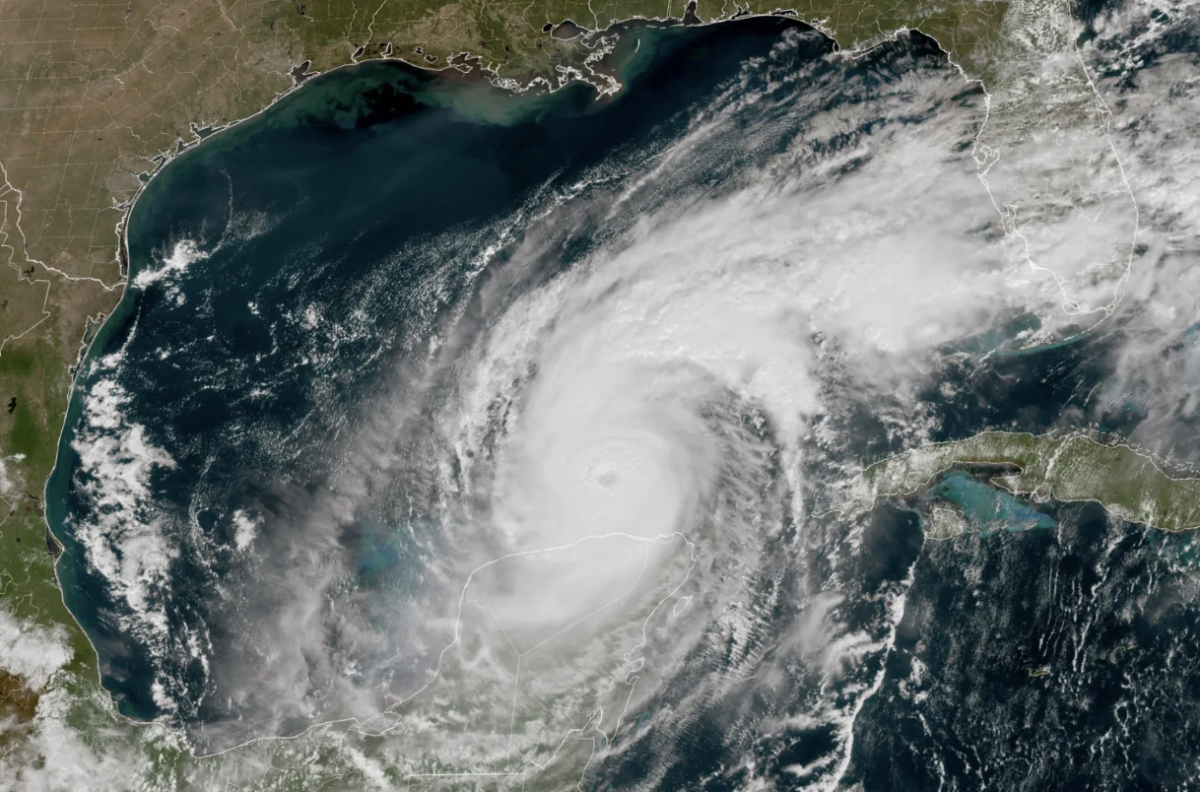Hurricane Milton tore through Florida on Oct. 9-10, causing widespread flooding, flattening homes, and leaving millions without power. The storm, one of the most powerful to hit the state in recent years, left a trail of destruction in its wake, and the damage varied significantly across different regions of Florida.
Homes along the Gulf Coast faced catastrophic flooding, with some areas submerged under almost 18 inches of rain. The Florida National Guard, along with state emergency workers, reduced about 1,200 people from flooded homes and vehicles, marking one of the largest disaster responses in the state’s history.
Other areas, however, experienced comparatively mild conditions, with little to no damage. Some inland regions of northern Florida, which had been bracing for the worst, saw only high winds and occasional rain. Many residents returned to find their homes intact, with only minor debris to clear away.
“My experience with the hurricane was not bad at all,” Jenny Zhao (12), student at East Ridge High School of Central Florida, said. “My power and WiFi stayed intact throughout the hurricane, but I know a lot of people who had it worse than me. I should mention that I come from the hilliest and most elevated part of Florida so most hurricanes do not hit me that bad because the elevation prevents flooding and the hills make the winds lose their strength.”
Currently, a number of social media influencers are facing criticism online for continuing their commute to Florida or decision to remain in the region despite the evacuation orders. For instance, Cecily Bauchmann—a TikTok influencer with over 2.2 million followers—shared a now-deleted video about her trip to Disney World Orlando, inciting backlash for her refusal to reschedule her trip despite the hurricane.
“It is obviously very frustrating to see influencers like Cecily Bauchmass ignoring evacuation orders just to keep their vacations,” Grace Choi (12), TikTok user, said. “I think they think that their social media presence is more important than safety. They are also doing it for clickbait which adds to the ignorance.”
Similarly, popular streamer Adin Ross offered $30,000 for someone to livestream the hurricane, increasing the offer to $75,000 if the person were to get “seriously injured,” while Caroline Calloway, an influencer and writer, admitted on Instagram and X that she remains in her Sarasota beach house, despite it being in an evacuation zone. Calloway’s video explaining her decision was reposted by the Daily Mail, with commenters calling it “difficult to watch” and “out-right ignorant.”
“I think it comes from a point of privilege,” Shamara Bornelus (12), student at Lely High School of Naples, Florida, said. “Most influencers who do not evacuate have the choice to do so; for others, their life is on the line. It is important to document the effects of hurricanes, but the attention many creators attract is not used for good. Social media creators have used natural disasters to propel their careers, rather than help those who have to start over after losing their homes.”
These creators stayed home, justifying their decision by stating that their homes could withstand the storm or that resources such as gas and funds for plane tickets were insufficient and inaccessible.
TikTok, for its part, labeled some creators’ hurricane videos with warnings against participating in dangerous behavior, and a spokesperson said videos that urged others not to evacuate or claimed that hurricanes do not pose risks were made ineligible for promotion on the For You page. TikTok also directed users who watched or searched for Hurricane Milton content to information from the US Federal Emergency Management Agency.
Some social media users have endorsed such creator behavior by watching, commenting, and liking their content. The creators benefit from the profits generated by this active engagement, raising concerns about the motivations behind posting such traumatic events.


